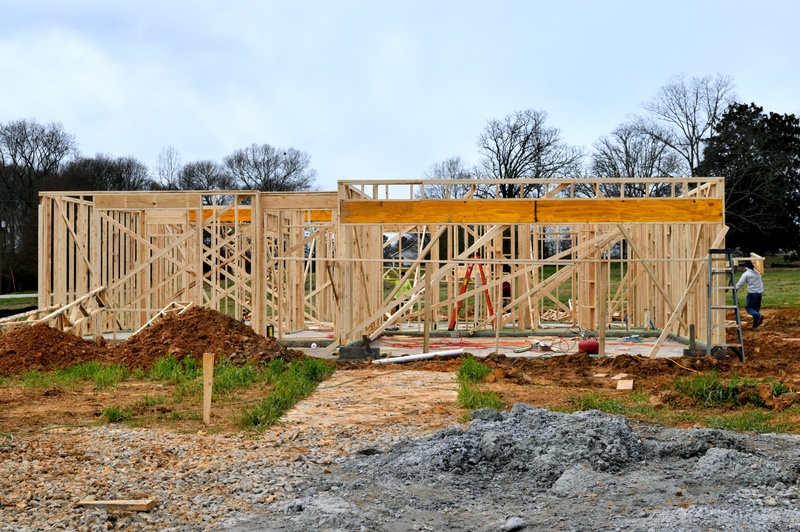It is hard to maintain a home, but knowing how to replace water damaged framing plate might lessen this burden. Water damage is a common problem that homeowners face, so it is necessary to acquire a skill to combat these occurrences.
Read more to find out what you can do to fix your damaged framing plates.

What Is A Framing Plate?
A framing plate consists of beam levels at the top and the bottom of a structural frame. It acts as a foundation and is used to create non-load bearing and load-bearing walls. Load-bearing walls are the ones that hold the load from above floors or roof structures, while the non-load-bearing walls are often used as room partitions.
Framing plates have two parts: the top plate and the bottom plate. The bottom plate is located at the base of the wall, often fastened into the floor structure. On the other hand, the top plate is located at the top of the frame, with a secondary plate called the king plate bolted into it to connect corners and other interior wall frames of the house or building.
How Long Does Framing Plates Take Water Damage?
Simple water contact is not enough to instantly cause water damage to a framing plate. These materials are usually made from solid wood and treated with protectors to ensure that they will last long. However, constant exposure to several elements that may cause further damage can start the deterioration within months.
Here are the things that can contribute to water damage:
Water exposure
Untreated and unpainted plates can absorb more water upon excessive exposure.
Moisture
The atmosphere is filled with microscopic particles of fungi. Once it penetrates the wooden plate, it can house airborne fungi and trigger rotting.
Warm/Humid temperatures
Places with warm and humid climates have more water in the air, making it faster for it to seep into the base of the wood. It will only take a short period to soak the plates and cause several water-related damages.
It is essential to remember that it still depends on the type of wood used in plates and the type of treatment it received. Most structural woods are made to resist rotting and water damage because they hold the whole house’s form. However, this does not take away the reality that wood will always be vulnerable to water damage.
Wooden framing plates can take damage or rot within six months if the wood is:
- Untreated
- With constant exposure to water
- Located near the ground
- Exposed to dirt
In some cases, water damage can develop within 1 to 3 years if the wood is:
- Left untreated
- Located in a humid climate
- Not properly painted
- Constantly accumulates water
- Left unclean
Although wood is an abundant and sustainable material, it doesn’t last forever and will eventually have damage without proper maintenance. It usually lasts for only 10 to 25 years or even longer as long as it is treated well and far away from water and mold vulnerability.
How To Recognize Damaged Framing
There are several things that you can watch out for to spot water damage on framing plates.
1. White, yellow, or brown patches
These patches often indicate that the wood is infected with molds and fungi. Check the beams every once or after thunderstorms to ensure that the plates are safe from fungus.
2. Flaking or peeling paint
Paints on a wood peel off when moisture breaks the bond between the wood fiber and the paint.
3. Brittle wood
Moisture changes the strength of the wood. Too much or lack of moisture can make the wood brittle and easy to break.
4. Unpleasant smell
The unusual smell coming from the wood is a sign of rotting. It is also an indication of severe water damage that made its way to break the wood. Watch out for an unpleasant smell near your framing plates.
5. Soft texture
The wood becomes soft when it absorbs too much moisture. You can check this by poking the surface.
6. Termite and bugs infestation
Termites are attracted to moist surfaces. They can also eat up the nearby beams and eventually damage the rest of the frame.
Replacing Water Damaged Framing Plate
Fortunately, replacing damaged and rotting framing plates is possible, and you can do this either with the help of a professional or you can do it yourself. If you choose the latter, these are the steps that you can follow.
Step #1. Start by removing the weight, nails, and anything that might come in the way in the replacement process.
Step #2. Remove the damaged beams. Check for the nearby wood if there are also signs of water damage, and make sure to remove them all.
Step #3. Re-design the frame and make sure that wood replacement fits nicely into the area. You should also check for the corners and stud system.
Step #4. Install the wood replacement.
Step #5. Inspect the area for any more signs of water damage.
Step #6. Treat the beam with a protectant or paint to prevent water from seeping into the wood.
Cost To Replace Damaged Framing Plates
The plate replacement cost can vary, but it has an average of $95 to $100 per linear foot. The amount that you can spend solely depends on the extent of the damage and the size of your home.
In most cases, wood rot is not included in insurance coverage provided to homeowners. Consult a trusted lawyer to find available insurance to help you with this particular problem.
Conclusion
Learning how to replace water damaged framing plate does not require much skill to accomplish. Always remember to check the framing plates and watch out for the early signs of water damage. Treat them with waterproof paint and sealant to prevent the water and moisture from reaching the base of the wood.
